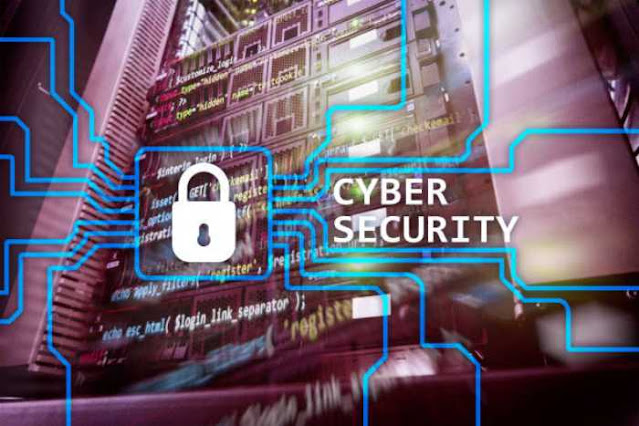The Role Of Technology In Mental Healthcare



Cybersecurity refers to the rehearsal of protecting computer
systems, networks, and digital data from unauthorized access, damage, theft, or
any other form of cyber threats. With the increasing reliance on technology and
the growing interconnectedness of devices, cybersecurity has become a critical
concern for individuals, organizations, and governments worldwide. It
encompasses various strategies, technologies, and practices aimed at
safeguarding digital assets and maintaining the confidentiality, integrity, and
availability of information.
Types of Cybersecurity:
Network Security: Network security focuses on protecting
computer networks from unauthorized access, data breaches, and other
network-based attacks. It involves implementing firewalls, intrusion detection
and prevention systems, virtual private networks (VPNs), and secure
configurations to ensure that network traffic is secure and only authorized
users can access the network.
Application Security: Application security involves securing
software applications and systems from potential vulnerabilities and attacks.
It includes practices such as secure coding, penetration testing, vulnerability
assessments, and regular software updates to mitigate risks associated with
application flaws and weaknesses.
Information Security: Information security pertains to
protecting sensitive information from unauthorized access, disclosure,
alteration, or destruction. This involves implementing access controls,
encryption techniques, data classification, and security policies to ensure the
confidentiality, integrity, and availability of data.
Cloud Security: Cloud security focuses on safeguarding data
and applications stored in cloud computing environments. It involves securing
cloud platforms, implementing strong authentication and access controls,
encrypting data, and regularly monitoring and auditing cloud resources to
mitigate risks associated with data breaches, unauthorized access, and data loss.
Endpoint Security: Endpoint security involves protecting
individual devices, such as laptops, desktops, smartphones, and tablets, from
cyber threats. It includes practices like antivirus software, intrusion
prevention systems, device encryption, and mobile device management to detect
and prevent malware infections, data theft, and unauthorized access to
endpoints.
Physical Security: Physical security aims to protect
physical assets, such as servers, data centers, and network infrastructure,
from physical threats like theft, vandalism, or natural disasters. This
includes implementing access controls, surveillance systems, and conservation
controls to ensure the physical security and continuity of operations.
Cybersecurity Strategy:
Risk Assessment: Conduct a comprehensive assessment of
potential risks and vulnerabilities to identify and prioritize the areas that
require the most attention. This involves evaluating existing security
controls, conducting penetration testing, and analyzing security logs to
identify weaknesses and potential entry points for cyber threats.
Security Policies and Procedures: Establish robust security
policies and procedures that outline guidelines for secure behavior, data
handling, password management, incident response, and employee training. These
policies should be regularly reviewed, updated, and communicated across the
organization to ensure everyone is aware of their persons and responsibilities
in maintaining cybersecurity.
Access Control: Implement strong access controls to limit
access to sensitive data and systems. This includes practices like strong user
authentication, role-based access control, least privilege principle, and
multi-factor authentication to ensure that only legal personnel can access
critical resources.
Security Awareness Training: Educate employees and users
about cybersecurity best practices, common threats, and the importance of
maintaining strong security hygiene. Regular training programs can help raise
awareness, reduce human errors, and improve overall security posture.
Incident Response: Develop an incident response plan that
outlines the steps to be taken in the event of a cybersecurity incident. This
includes establishing a dedicated incident response team, defining
communication channels, and regularly testing and updating the plan to ensure
an efficient response and recovery process.
Continuous Monitoring: Implement robust monitoring systems
to detect and respond to potential security breaches in real-time. This
involves deploying intrusion detection systems, security information and event
management (SIEM) tools, and performing regular security audits and log
analysis to identify and mitigate security incidents.
Regular Updates and Patch Management: Keep software,
operating systems, and applications up to date with the modern security reinforcements
and updates. Regularly applying patches and updates helps address known
vulnerabilities and reduce the risk of exploitation by cybercriminals.
Data Backup and Recovery: Regularly back up critical data
and establish a comprehensive data recovery plan to ensure business continuity
in the event of a cybersecurity incident. Backup data should be stored securely
and tested regularly to ensure its integrity and availability when needed.
Third-Party Risk Management: Assess and manage the
cybersecurity risks associated with third-party vendors, suppliers, and
partners. This includes conducting due diligence, reviewing their security
practices, and implementing contractual obligations to ensure they adhere to
cybersecurity standards.
Compliance with Regulations: Ensure compliance with relevant
cybersecurity regulations and standards applicable to your industry. This may
include regulations such as the General Data Protection Regulation (GDPR),
Payment Card Industry Data Security Standard (PCI DSS), or the Health Insurance
Portability and Accountability Act (HIPAA).
In conclusion, cybersecurity is a multidimensional approach
that requires a combination of technical measures, policies, procedures, and
user awareness to protect against evolving cyber threats. By implementing a
comprehensive cybersecurity strategy and staying proactive in the face of
emerging risks, individuals and organizations can significantly reduce the
likelihood and impact of cyber attacks.